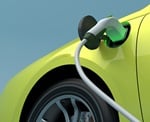Webinars
2023 EVolve With Us—Electric Vehicles Symposium
| Wednesday, June 7, 2023 |
| 01:00 PM - 03:00 PM Eastern Daylight Time |
| 12:00 PM - 02:00 PM Central Daylight Time |
| 10:00 AM - 12:00 PM Pacific Daylight Time |
 Our industry-leading electric vehicles (EV) practice is actively engaged in the dynamic and competitive EV landscape—monitoring and advising on issues pertinent to automotive manufacturers, electric utilities, investors, and charging station developers. Please join us for a virtual symposium where we will hear from a panel of experts with diverse viewpoints from various sectors of the EV space on industry developments and legal considerations.
Our industry-leading electric vehicles (EV) practice is actively engaged in the dynamic and competitive EV landscape—monitoring and advising on issues pertinent to automotive manufacturers, electric utilities, investors, and charging station developers. Please join us for a virtual symposium where we will hear from a panel of experts with diverse viewpoints from various sectors of the EV space on industry developments and legal considerations.
Please join us for our second annual virtual symposium, where we will hear from a panel of industry authorities with diverse viewpoints from various sectors of the EV space on developments and legal considerations.
View last year’s EV Symposium >>
Topics will Include:
- Developments in network charging infrastructure
- Implications of the Infrastructure Investment and Jobs Act and Inflation Reduction Act on EV development and deployment
- Federal and state regulatory and policy developments and obstacles
- Battery supply chain, component manufacturing, and recycling
FEATURED PANELISTS
Jay Joseph
Vice President of Sustainability and Business Development, American Honda Motor Co., Inc.
Tara Gibbons
Associate General Counsel, Wawa, Inc.
Bill O’Donnell
Senior Director of Retail Fuels and Business Development, Wawa, Inc.
Michael Backstrom
Vice President of Regulatory Affairs, Southern California Edison
Brendan Beasley
Managing Director, Head of Legal, Highland
Key Takeaways
- The confidence consumers and investors have in the availability of charging and its actual availability will influence electric vehicle (EV) adoption rates moving forward. The industry’s thinking is maturing. Although the answer to charge anxiety used to be bigger batteries, the industry is collectively continuing to confront the reality that the answer to range or charge anxiety is better access to reliable charging.
- While government initiatives and incentives that promote EV adoption show promise, players in the EV space are weighing the conditions attached to the potentially available funding and are concerned with uncertainty around the necessary qualification requirements. The potential for incentives to create a false economy that may be taken advantage of should also be a consideration when assessing the effectiveness of such offerings.
- From a fleet standpoint, economics are strong and clear in terms of regulations and how the long-term trajectory looks for vehicle operators, but use cases are also an important factor.
- Utilities believe the grid can and will accommodate the anticipated EV load but stress the importance of planning. Given carbon neutrality targets, as 2025 approaches, the degree of growth and load expectation is substantial.
- The idea of decarbonization as part of a US energy transition taking place in three parts, including electrification-EV accommodation and charging; onsite solar generation; and adjacently sited battery storage assets, could lead to a potential scenario of onsite generation of electrons stored in batteries and potentially provide energy to onsite assets or EV chargers. This is viable and inevitable. Entities that are not pursuing or planning to address a multi-faceted decarbonization strategy will be at a competitive disadvantage.
- The rate design question is a critical one the industry has been wrestling with since the start of EV adoption. Anything that reduces or eliminates demand charges in the initial years of implementation to allow for ramp up, and the adoption of BEVs helps retailers. It can be a tradeoff for customers, however. For those who want to charge their vehicle 24/7, demand charges and rate designs may not work as well.
- Cybersecurity is a considerable focus for the electric grid across the country. EV charging is now another area where communication with the grid is going to be critical from a load management perspective and a pricing standpoint. There is a lot of communication and intersection coming from utilities to charging points and into vehicles, making protection from malicious actors critical.
- Bi-directional charging potential is huge for the automotive and mobility industry as a revenue stream, particularly in medium and heavy-duty vehicles. While the needs of the grid will vary by region, bi-directional charging can really drive affordability.
CLE credit: CLE credit in CA, FL, IL, NJ, NY, PA, TN, TX, and VA is currently pending approval for live viewings only. Credit in NJ is via reciprocity.